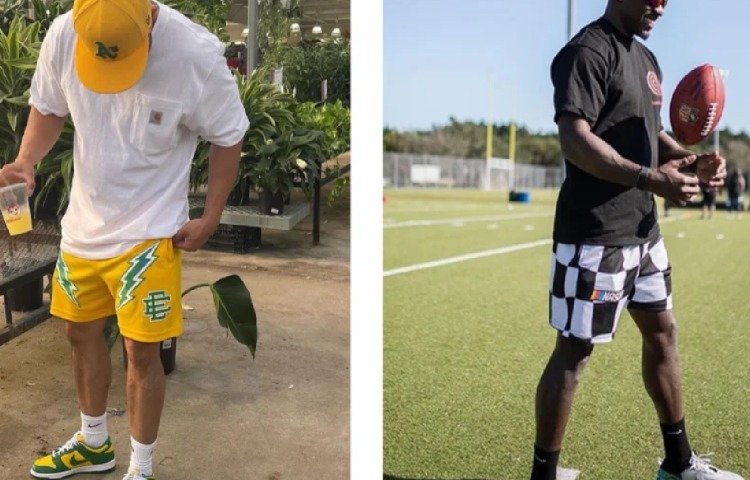An Exploration of Classical Design and Contemporary Reimagining of Egyptian costumes
Egyptian attire has long captivated people, both historically and in contemporary popular culture. Egyptian clothing, which embodies themes of strength, beauty, and mysticism, continues to captivate the imagination. Egyptian clothing is inspired by one of the most advanced and enigmatic ancient civilizations in history. Putting on an Egyptian costumes for a Halloween party, theater play, or historical reenactment takes the wearer back to a time when there were pharaohs, pyramids, and gods. This essay will discuss the importance of traditional Egyptian clothing, its design components, and how contemporary adaptations maintain the legacy of this antiquated fashion.
Background History: The History of Egyptian Costumes
Ancient Egyptian clothes served a practical purpose in addition to having rich symbolic meaning. Egyptian clothing frequently represented social standing, religious convictions, and local weather. The majority of the nation is covered in desert, thus the materials and designs were carefully picked to be both heat-resistant and useful for everyday living. The most popular fabric was linen because of its light weight and breathability. But ancient Egyptian clothing was more than just functional; it also included elaborate patterns and ornaments that denoted authority and riches.
The rigid class system of the ancient Egyptians was evident in the clothes they wore. The upper class and royalty wore more extravagant clothing embellished with jewelry and precious stones, while commoners wore basic linen garments. The most powerful people in Egyptian culture, the pharaohs, donned clothing that represented their divine right to rule. These garments were frequently adorned with eye-catching emblems like the Eye of Horus or the ankh and were constructed of opulent materials.
Important Details for Creating Traditional Egyptian Costumes
The purpose of ancient Egyptian garments was to make a statement in addition to serving as clothing. The distinctive clothing, accessories, and symbols that capture the vibrant culture of the era are what define Egyptian fashion.
Clothes with linen
Because of the hot temperature, Egyptians preferred linen, which is manufactured from the flax plant. The shendyt, a wraparound kilt that was typically pleated or draped in different ways depending on the wearer’s social rank, was the standard piece of clothing for men. Women wore strapless sheath gowns called kalasiris. White predominated because it represented cleanliness and purity, two attributes that were highly prized in Egyptian culture.
Accessory Items and Design
In addition to being a status symbol, jewelry was worn by the Egyptians as a kind of protection in the form of amulets and charms. Rich Egyptians wore headdresses, bracelets, and necklaces made of lapis lazuli, turquoise, gold, and other priceless stones. Among the most recognizable pieces of Egyptian jewelry is the wide collar necklace, or wesekh. Wearers of the large, semicircular piece, both sexes, were said to have wealth and a close relationship with the gods.
Emblems and Crowns
A conversation on Egyptian clothing would be incomplete without addressing the well-known headpieces and crowns donned by the nobility. The Nemes headdress, a striped cloth covering the head that represents royalty and divine authority, is frequently featured in portraits of pharaohs like as King Tutankhamun. Pharaohs wore the Pschent, or double crown, as a sign of their authority over the whole kingdom. It symbolized the unification of Upper and Lower Egypt. The vulture crown was frequently worn by women, especially queens and goddesses, as a symbol of their protecting ability.
Hairstyles and Cosmetics
The Egyptians were well-known for their unusual use of cosmetics, particularly kohl, a black substance used around the eyes. Their eyes were shielded from the sun’s rays and infections were prevented, thus this did more than just improve their appearance. In addition, wigs composed of plant or human hair were worn by both sexes and were frequently dressed in ornate curls or braids. A significant component of the Egyptian aesthetic, hair and cosmetics added to the civilization’s sense of mystery and refinement.
Contemporary Takes on Egyptian Costumes
Egyptian costumes are becoming a popular option for fancy dress parties, Halloween, and theatrical productions in the modern world. The famous depictions of pharaohs, queens, and gods that we witness in historical documents and Hollywood motion pictures frequently serve as the basis for these contemporary interpretations. Some costumes are more stylized and incorporate traditional components with a contemporary touch, while others strive for historical realism.
Costumes of Pharaohs
One of the most popular options is a pharaoh costume, especially for people who want to represent the majesty and grandeur of ancient Egypt. To resemble the riches and grandeur of a pharaoh’s clothing, these costumes usually have a metallic or golden appearance with elaborate design. The Nemes headdress, which is frequently worn with a flowing robe or tunic, completes the ensemble. To increase the realism of the outfit, accessories like a crook and flail, which represent royalty and fertility, or a scepter, which represents a pharaoh’s authority, are sometimes included.
Costumes for Cleopatra and the Egyptian Queen
Costumes of Cleopatra are especially well-liked by ladies because of her renown as one of Egypt’s most formidable and astute queens. Long, flowing robes in gold, white, or black hues are the standard for modern Cleopatra costumes; these gowns are sometimes accessorized with elaborate collars and belts to symbolize the queen’s status. Typically, the appearance is finished with a wig trimmed in the iconic bob haircut of Cleopatra and dramatic eye makeup reminiscent of the kohl designs of ancient Egypt.
Costumes for Egyptian Gods and Goddesses
The representation of Egyptian gods and goddesses is another well-liked theme. Dramatic costume designs are inspired by figures such as the goddess of magic and motherhood, Isis, and the god of the afterlife, Anubis. Costumes for Anubis normally include a gold and black tunic and a black mask like a jackal, whereas those for Isis are usually more feminine, with flowing white robes and wings signifying her position as the pharaohs’ protector.
How to Make Your Own Egyptian Costume
Making your own Egyptian costume can be a creative and fulfilling experience, even if many people choose to purchase pre-made costumes. The following advice can help you create your own Egyptian costume:
Select the Fabric: If you want to replicate the materials used by the ancient Egyptians, start with light, breathable fabrics like cotton or linen. Use gold accents or metallic materials for a more regal style that symbolizes riches and status.
Choose Your Accessories Carefully: Egyptian costumes greatly depend on their accessories to finish the look. Wear statement pieces of jewelry, such as cuffs and broad collars. Paint, cardboard dyed gold, or even costume jewelry from a thrift shop can be used to create these.
Remember to Apply Makeup: If you want to really rock the Egyptian look, think about adding cosmetics to your outfit. The classic Egyptian eye makeup requires thick black eyeliner, although metallic colors can also be used for extra drama.
Headpiece or Wig: Creating or purchasing a wig or headpiece may be necessary, depending on your character. You can acquire an Egyptian-style wig for a Cleopatra or queen costume, or you can make a Nemes headdress out of a simple piece of striped linen.
In conclusion, Egyptian costumes continue to be popular.
Egyptian attire is classic and evocative of one of the most fascinating civilizations in history. These costumes help people relate to the majesty, mystique, and mythology of ancient Egypt—whether they are donned for a themed party, a play, or a reenactment. Egyptian costumes never cease to enchant and inspire, providing a wealth of creative freedom and expressive possibilities, from the commanding image of a pharaoh to the grace of Cleopatra or the enigmatic persona of Anubis. It’s guaranteed to leave an impression whether you dress historically authentically or in a contemporary manner like an ancient Egyptian.






